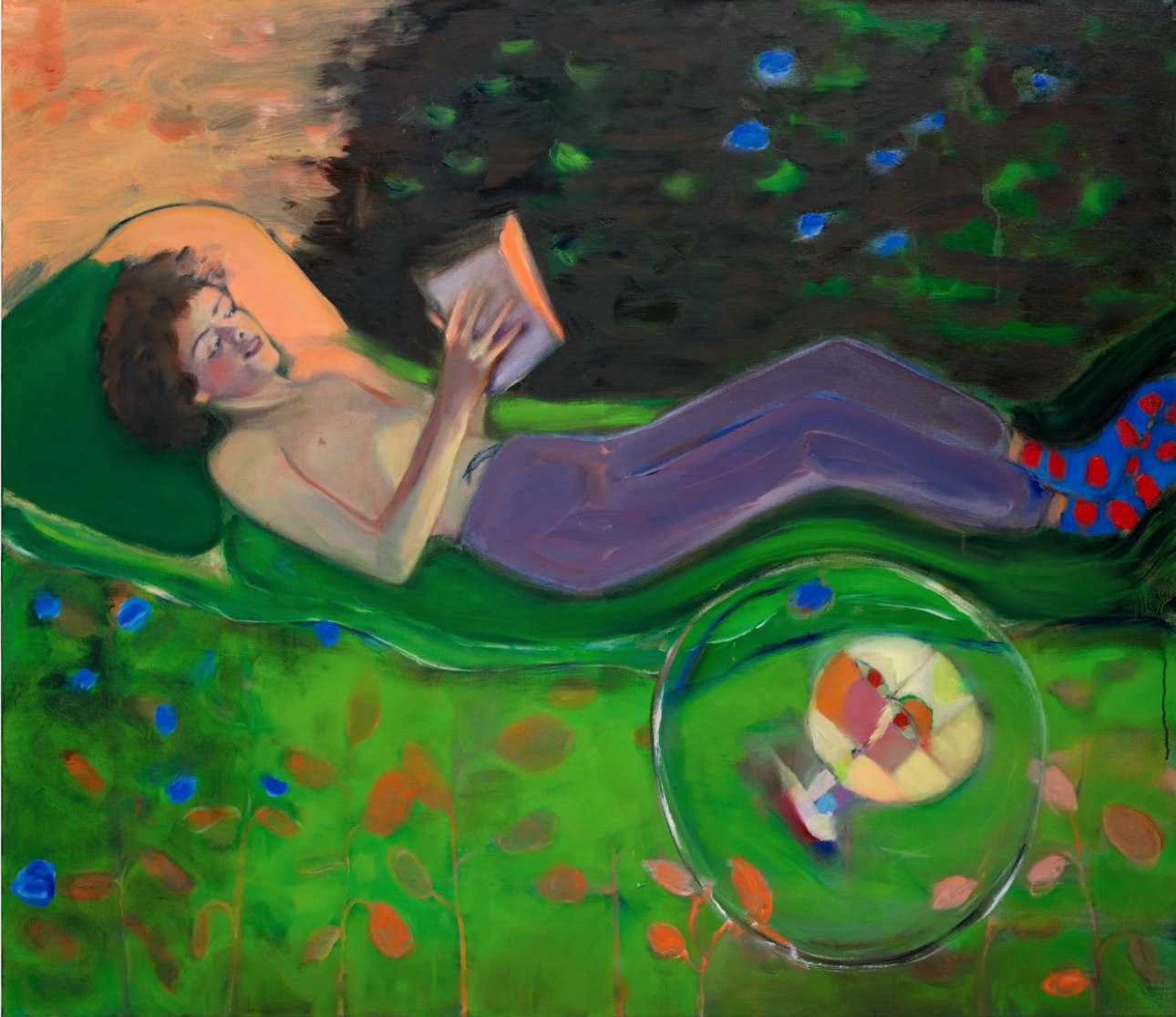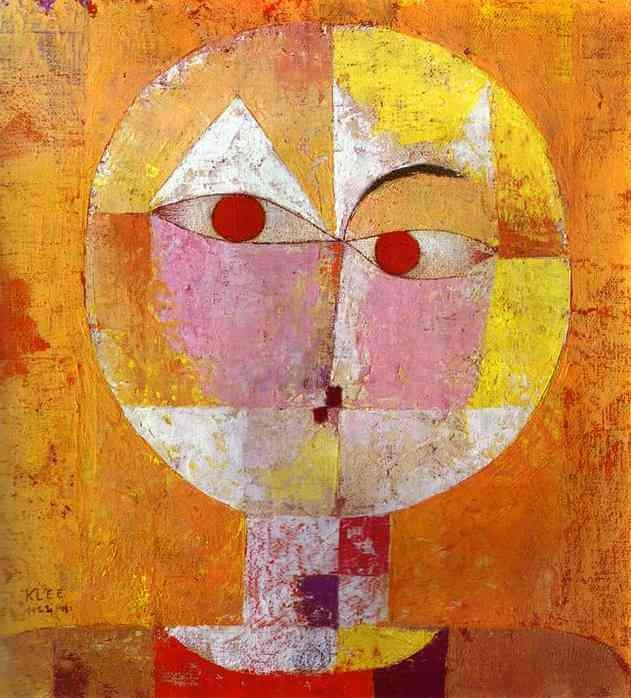In Search of Rosalind Nashashibi: Some Notes, A Reflection.
Standing in Trafalgar Square and facing towards the National Gallery, your vision is dominated by the colour grey. The buildings are grey, the floor is grey, grey sky, pigeons, universe. Of locations symbolising the grandeur of Britain’s legacy, you’d be hard pressed to find one more recognisable than here.
The National Gallery recently held a screening of Rosalind Nashashibi’s completed film project, ‘A trilogy of films: 'Part One, Part Two and Part Three'. Nashashibi had the recent honour of being named the National Gallery’s first Artist-in-Residence. Alongside access to the Gallery’s pool of professionals and resources, she also worked from an on-site studio, metres from the Gallery’s world-famous collection.
Whilst Nashashibi predominantly works in film, during her residency she experimented with painting. Her paintings were presented alongside some of the more historically famous paintings in the National Gallery - with a particular focus given to Room 30 where paintings from the Spanish Baroque are hung. She returned to this room once again in the third part of her film trilogy. A friend walks through the gallery, narrating what she sees. Attention is drawn to Juan de Zubarán’s Still Life with Lemons in a Wicker Basket. The narrator tells us a friend has commented on how much the lemons in the painting look like breasts. ‘And it’s true’, she says. ‘They do’.
Still Life with Lemons in a Wicker Basket
I left Nashashibi’s screening in search of more of her films.
Nashashibi’s use of music is cinematic, unpredictable and apposite. Her images are unshowy and composed of a certain ‘lived-in’ quality, no doubt a result of the 16mm photographic stock she uses. She alludes to narrative in an elliptical way and her films, as fictionalised as their setting may be, are formed of a documentary style which imparts the feel of truth to whatever you see.
However, it’s difficult to find her films online. There is LUX, of course. But I can’t afford to pay for the hire of films every time I feel like watching one.
There are far more of her painted works available to view online at GRIMM gallery and Artsy, partial a representation of her career as they may be. They tend to fall from the more recent end of her career, something she has started working on more regularly and with greater consistency as time has gone by. I delved into these wherever I could, and, little by little, a portrait of Rosalind Nashashibi began to emerge.
For instance, look at this painting by Nashashibi which was recently purchased by the Chisenhale Gallery:
The Demimondaine
The title of the piece, The Demimondaine, derives from the French word, ‘demi-monde,’ which means ‘half-world’. The ‘demi-monde,’ a 19th century term, was the elite world occupied by men and the women who entertained them. A ‘demimondaine’ was the name given to women who occupied this elite half-world, synonymous with a courtesan or prostitute.
“For The Demimondaine, Rosalind Nashashibi has collaged together two elements, an abstract gouache hand painted by the artist, together with an inverted digital giclée print of a painting by her daughter Pauline.”
The original blue painting created by her daughter had hung in Nashashibi’s kitchen for 5 years. There was a lapse of time in which meaning accreted and, in turn, filled Nashashibi’s response to it. The relationship between the painting’s title and Nashashibi’s daughter was unclear.
There is also the artist’s response to her daughter’s painting: She has painted what appears to be a wine glass, except that the colour surrounding it, that is, the shapes of colour which form the wineglass, are a brown and murky purple, similar to the colour of wine. The wine sits outside the wineglass. Is this empty wineglass a remnant of the fun-loving, pleasure-seeking world of the demimondaine?
Nashashibi works in the abstract tradition, meaning that her works seek to make manifest on the visible place something which may remain invisible or contained inside of us if she were to work in a representational, pictorial manner.
The space within the painting is shaped through the interaction of two figures, rather than the individual outlining of a wine glass. The space, which first occurs to the viewer as shaped like a wine glass, may be part of the wider background. The layering of Nashashibi’s daughter’s painting over the heads of two figures prevents the viewer from being able to see the entirety of the background. This in turn leads the painting to appear like a Rorschach test, one where what you see first may either be the shape of a wine glass, or that of two heads interacting. Is this a communication between mother and daughter? Nashashibi’s daughter’s painting subsists between them, a common production from between the ages, the empty glass of wine merely a suggestive by-product of the two face’s interaction. An outpouring or an emanation, if you like.
Duality abounds in Nashashibi’s paintings, something which the artist has referred to herself as the connection between the conscious and the unconscious, or a prefiguring of certain characteristics in embryo, i.e. the passage from boyhood to manhood. In ‘Unexpected Views: Rosalind Nashashibi on Jusepe de Ribera’ Nashashibi states that she regularly uses a split frame in her compositions to make these points.
18:48-19:23 and 27:45-28:35
One final interpretation of the painting is that the wineglass sits on a table, of which the purple-brown blocks in the background are the surface area. The wineglass sits in the foreground, blocking out the remainder of the table, thus making it seem like two faces facing each other, creating the illusion of a wineglass through their interaction. Nashashibi’s daughter’s painting then exists in a further space, jutting out from the image of the wineglass on the table. In this understanding of the painting, Nashashibi works in a 3D space using different planes of colour and shape to create the composition. Whilst this doesn’t change the potential meaning that might be drawn from Nashashibi’s choice of title and the interaction of materials she relies upon to create it, it does show an interesting example of how Nashashibi uses space to create perspective within her paintings. She has mentioned that she likes to draw legs because you can look around or through them (see National Gallery video above – 20:18 – 20:32). This technical matter affects our experience of the painting, allowing us to draw certain interpretations from what we appear to see. Our perception of it is guided by the placement of certain objects within the scene.
In ‘Boy Fizzing’ Nashashibi paints her son, reading, on what seems to be a summer evening. Within the painting she provides a visual quote to Paul Klee’s painting ‘Senecio’.
Once again, we are in a space where the artist’s personal, private context is brought into contact with a wider frame of allusion. In the beginning, it was tempting to see the reference to Klee as stylistic or thematic but now, it appears to be much more literal and intuitive than that.
In Senecio, Paul Klee depicts portrait of a senile, old man. By placing it into direct contact with her son on canvas, Nashashibi appears to be drawing a connection between the two characters. The Senecio visual quote pops out of her son, like a speech or thought bubble. Does something in her son’s posture or attitude, suggest the figure of the senile, old man in Senecio to Nashashibi? Or, at least, what the senile, old man in Senecio seems to represent. Does the figure of her son represent the old man in embryo, as she suggests some figures in her paintings can do (earlier reference to National Gallery video), or something imagined by her son, an emanation or outpouring as, again, she appeared to do earlier in response to the picture by her daughter.
Meaning remains latent in Nashashibi’s painting, much like the subconscious, to be brought to the surface or revealed through interaction with some specific subject or object, the wineglass of the Demimondaine, or her son reading on a summer evening, for instance. Although, of course, the process might be easily said to work in the opposite direction too. The references prefigure their subjects in embryo.
As Nashashibi says:
“the Klee head [is] doing a similar thing here, extracting something and manifesting it in the visible plane which is part of the inner life of the subject, or the painter, not sure which”
Bibliography:
Artsy <https://www.artsy.net/artist/rosalind-nashashibi> [accessed May 11 2022]
Chisenhale, The Demimondaine, 2017 <https://chisenhale.org.uk/shop/rosalind-nashashibi/> [accessed May 11 2022]Gabrielle Schwarz, ‘Spanish pointers – Rosalind Nashashibi at the National Gallery’, Apollo, 23rd December 2020 <https://www.apollo-magazine.com/rosalind-nashashibi-artist-in-residence-national-gallery/> [accessed 11 May 2022]
GRIMM Gallery <https://grimmgallery.com/artists/60-rosalind-nashashibi/series/paintings/> [accessed May 11 2022]
GRIMM Gallery ‘Press Release, Darkness and Rest’, GRIMM Gallery, New York, 2021 < https://grimmgallery.com/exhibitions/217-rosalind-nashashibi-darkness-and-rest/> [accessed May 11 2022]
Unexpected Views: Rosalind Nashashibi on Jusepe de Ribera | National Gallery, The National Gallery, 23rd October 2020 <https://www.youtube.com/watch?v=DK5W1DG2HLE&ab_channel=TheNationalGallery> [accessed May 11 2022]
Vivian’s Garden (dir. Rosalind Nashashibi; 30 min; colour; stereo) in ‘Vivian’s Garden with Stefan Benchoam’, 20th October 2018 <https://www.youtube.com/watch?v=PaC4LF1bYRY> [accessed 11 May 2022]
Illustrations List:
Juan de Zurbarán, Still Life with Lemons in a Wicker Basket, 1643-49, Oil on canvas, 81.4cm x 108.5 cm, National Gallery, London <https://www.nationalgallery.org.uk/paintings/juan-de-zurbaran-still-life-with-lemons-in-a-wicker-basket> [accessed May 11 2022]
Paul Klee, Senecio, 1922 <https://www.paulklee.net/senecio.jsp> [accessed 11 May 2022]
Rosalind Nashashibi, The Demimondaine, 2017, Hand painted gouache onto Somerset satin white 410gsm, hand collaged digital print onto Somerset radiant white velvet 330gsm, 44 x 51 cm, Chisenhale Gallery, London <https://chisenhale.org.uk/shop/rosalind-nashashibi/> [accessed 11 May 2022]
Rosalind Nashashibi, Boy Fizzing, 2021, Oil on linen, 130 x 150 cm, GRIMM Gallery, New York <https://grimmgallery.com/exhibitions/217/works/artworks-22204-rosalind-nashashibi-boy-fizzing-2021/> [accessed May 11 2022]




